Description
0.23mm SS316 Craft Wire
The Crazy Wire Company are long established as Europe’s preferred suppliers of top quality SS316 craft wire. We have enormous stock levels at all times, as we use this wire to weave our marine grade woven mesh products.
The SS316 craft wire is a stainless steel wire that boasts a fine diameter of 0.23mm (230 Micron or 31AWG). This makes it ideal for precision work in various crafting applications. This high-grade wire is composed of SS316 stainless steel, known for its corrosion resistance and durability, which ensures longevity in both functional and decorative uses.
With a resistance of 18.56 Ohms/ft, this craft wire is particularly well-suited for intricate electronics projects, including jewelry making, where it can be used to create detailed pieces with consistent electrical conductivity. Its fine gauge allows for intricate work. This enables artists and craftsmen to bend, twist, and shape the wire while maintaining its strength and structural integrity.
The SS316 craft wire’s adaptability extends beyond craft and into practical applications such as in the marine environment, where its resistance to rust is invaluable. This wire is also a popular choice for DIY enthusiasts who require a reliable material that can withstand the elements and frequent handling.
Key Product Details:
- Diameter – 0.23mm (230 Micron – 31AWG)
- Ohms/ft – 18.56
- Iron (Fe): 66.5% to 74%
- Chromium (Cr): 16% to 18%
- Nickel (Ni): 10% to 14%
- Molybdenum (Mo): 2% to 3%
- Manganese (Mn): 2% max
- Silicon (Si): 1% max
- Carbon (C): 0.08% max
- Sulfur (S): 0.03% max
- Phosphorus (P): 0.045% max
Why Use The Crazy Wire Company
- Quality of products: The Crazy Wire Company always offer high-quality products that meet industry standards and customer expectations.
- Selection: We offer a wide variety of wire products and sizes to meet the diverse needs of our customers. We have more than 600 products available through our site and counting.
- Price: We always offer the best value possible. Our wires are available as part of our major weaving processes, so it is bought at the best possible rate.
- Availability: Our products are kept in house and are ready to ship immediately.
- Customer service: Our experienced staff help our customers feel confident in their purchases and provide assistance when required.
What Else Is Available?
Not only do we offer 316 grade stainless steel wire, but we also stock huge levels of SS304, SS430 (magnetic) and SS317L.
We also offer stainless steel in ribbon and flat wire options.
The choice is virtually endless!
FAQs About This Wire
What Are 316 Stainless Steel Options Are There?
We stock the following standard options:
- 0.23mm (31AWG) – 18.56 Ωm
- 0.25mm (30AWG) – 15.71 Ωm
- 0.27mm (29AWG) – 13.47 Ωm
- 0.28mm (29AWG) – 12.52 Ωm
- 0.3mm (29AWG) – 10.91 Ωm
- 0.35mm (27AWG) – 8.01 Ωm
- 0.39mm (26AWG) – 6.45 Ωm
- 0.45mm (25AWG) – 4.85 Ωm
- 0.6mm (22AWG) – 2.73 Ωm
- 0.62mm (22AWG) – 2.55 Ωm
What Is Considered Better Than 316?
There are several grades of stainless steel that are considered “better” than 316 in specific applications, depending on the desired properties. Some examples include:
- 317L: This grade of stainless steel has a higher molybdenum content than 316. This makes it more resistant to pitting and crevice corrosion. It is commonly used in chemical processing, petrochemical and marine environments.
- 904L: This grade of stainless steel contains high levels of nickel, chromium, and molybdenum, which makes it highly resistant to corrosion, particularly in harsh environments. It is commonly used in the chemical processing, petrochemical, and marine industries.
- 2205: This grade of stainless steel is a duplex stainless steel, which means that it contains a mix of austenitic and ferritic microstructures. It is highly resistant to corrosion, particularly in chloride environments. It is commonly used in the chemical processing, petrochemical, and marine industries.
- 254SMO: This grade of stainless steel is designed for use in highly corrosive environments, such as those found in the pulp and paper, and chemical processing industries. It contains high levels of molybdenum, nickel, and chromium, which make it highly resistant to corrosion.
- C276: This grade of stainless steel is a nickel-molybdenum-chromium alloy with an addition of tungsten. It is highly resistant to corrosion, particularly in chloride environments. It is commonly used in chemical processing and pollution control equipment.
It’s worth noting that these grades are more expensive than 316, and may not be necessary for all applications. The choice of the most appropriate grade of stainless steel will depend on the specific requirements of the application, including the environment it will be used in and the desired properties.
How Long Will 316 Stainless Wire Last?
The lifespan of 316 stainless steel wire will depend on a variety of factors, including the environment it is used in, the loading conditions, and the level of maintenance.
In general, 316 stainless steel wire is known for its excellent corrosion resistance, particularly in environments that contain chlorides. When used in an environment where it is not exposed to harsh conditions, such as high temperatures or corrosive chemicals, 316 stainless steel wire can last for many years.
However, in more demanding environments such as marine or chemical processing, the wire may need to be replaced more frequently. For example, in a marine environment, 316 stainless steel wire may last for several years, but in a chemical processing plant, it may need to be replaced every year or two.
Additionally, if the wire is subject to high loads or stress, it may also have a shorter lifespan. Proper maintenance, such as regular cleaning and inspection, can also help to extend the life of 316 stainless steel wire.
It’s worth noting that the properties of the 316 stainless steel wire can also be affected by factors such as the manufacturing process, the composition of the alloy and the surface finish, which can affect its resistance to corrosion and stress.
Can You Solder SS316 Craft Wire?
Yes, SS316 grade craft wire can be soldered, but it is more challenging compared to soldering other types of wire due to its high chromium content. When stainless steel is heated, a chromium oxide layer forms on the surface, which can prevent the solder from adhering properly.
However, with proper preparation and techniques, 316 grade stainless steel wire can be successfully soldered. Here are the steps to follow:
- Clean the wire: The wire must be thoroughly cleaned to remove any dirt, oil, or other contaminants that may prevent the solder from adhering. A common method is to use a cleaning solution of hot water, vinegar, and baking soda, or a specialised stainless steel cleaner.
- Tin the wire: To tin the wire, heat it with a soldering iron until the surface is hot enough for the solder to flow and adhere to the wire.
- Apply flux: Flux helps the solder to flow and adhere to the wire. Apply a small amount of flux to the wire before soldering.
- Solder: Apply the soldering iron to the wire and solder. Make sure that the solder is evenly distributed along the length of the wire.
- Clean the soldered joint: After soldering, the joint should be cleaned to remove any residue from the flux and to prevent oxidation.
How To Anneal Stainless Steel Wire
Annealing SS316 craft wire is a process of heating the wire to a high temperature and then slowly cooling it to relieve internal stress and improve its ductility and toughness. Here are the steps to follow:
- Clean the wire: Clean the wire to remove any dirt, oil, or other contaminants that may affect the annealing process.
- Preheat the wire: Place the wire in a preheating oven and heat it to a temperature of approximately 800°C to 900°C (1472°F to 1652°F), depending on the specific type of stainless steel.
- Soak the wire: Once the wire has reached the preheating temperature, soak it in the oven for a period of time. This will depend on the specific type of stainless steel. It allows the wire to reach an even temperature throughout its entire length.
- Raise the temperature: Raise the temperature of the wire to the annealing temperature. This is typically between 1040°C and 1150°C (1904°F and 2102°F), depending on the specific type of stainless steel.
- Soak the wire at the annealing temperature: Soak the wire at the annealing temperature for a period of time, depending on the specific type of stainless steel. This allows the internal stress to be relieved and the wire to be annealed.
- Cool the wire: Slowly cool the wire to room temperature, either in the oven or by air cooling.
The Crazy Wire Company is a leading UK based supplier of nichrome, FeCrAl, and stainless steel wires. We specialise in rapid delivery to any location around the country. Our factory is located in Warrington, which is the historic home of the UK’s wire industry.
Check out our blog ‘What You Need To Know About: Stainless Steel Wires’ for more information on resistance wire in general. Our goal for our blogs and help guides is to answer as many questions as possible to help to explain the possibilities of mesh to our customers.
We also offer similar products through our highly popular eBay store, check us out there too.
Contact our team today if you have any questions at all. We are always really keen to help in any way that we can.

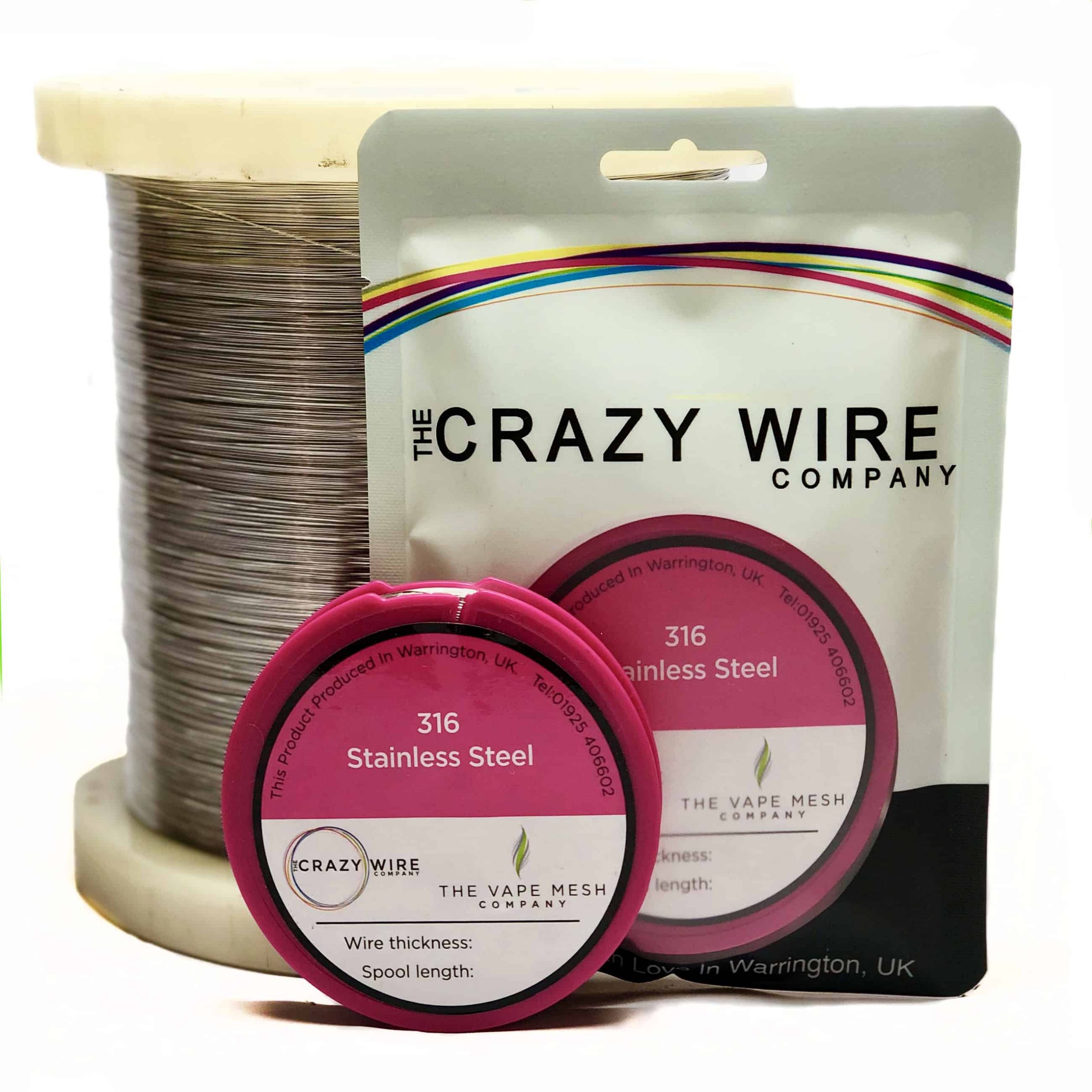


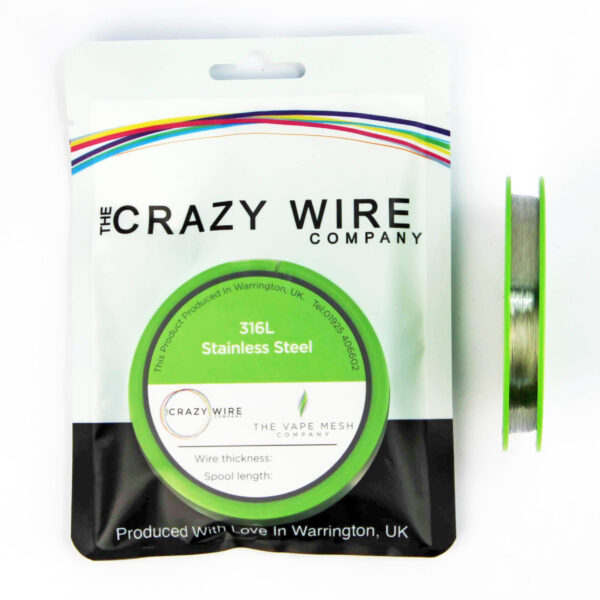
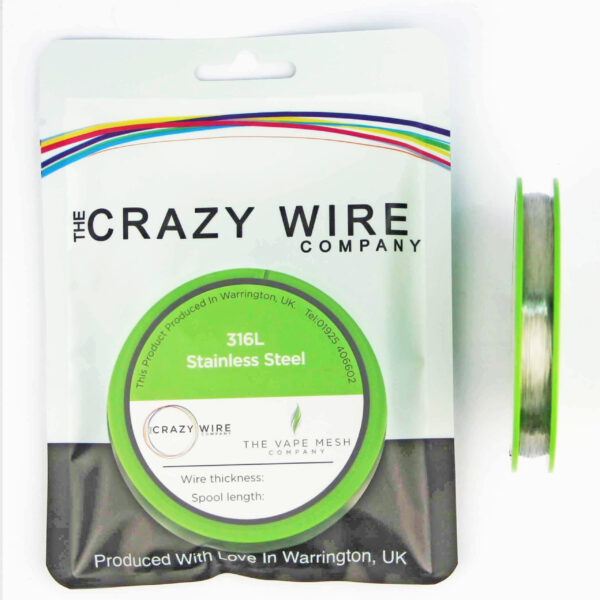
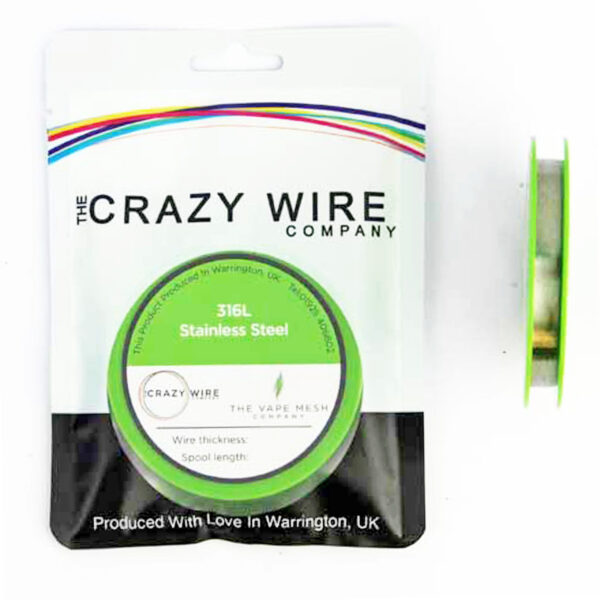
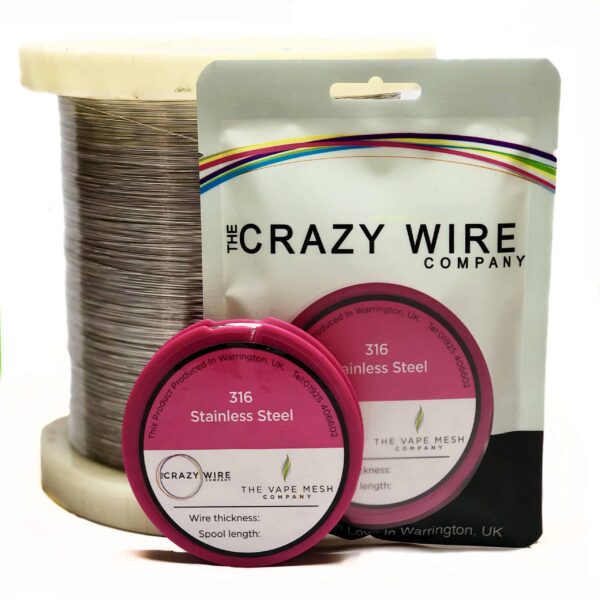





Reviews
There are no reviews yet.